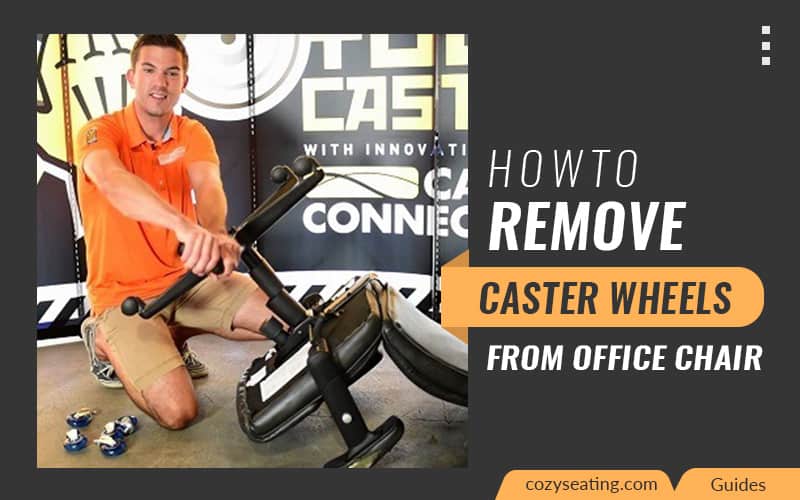
Disclosure: This site is reader-supported & contains affiliate links. We may earn a commission through products purchased using links on this page. Learn more
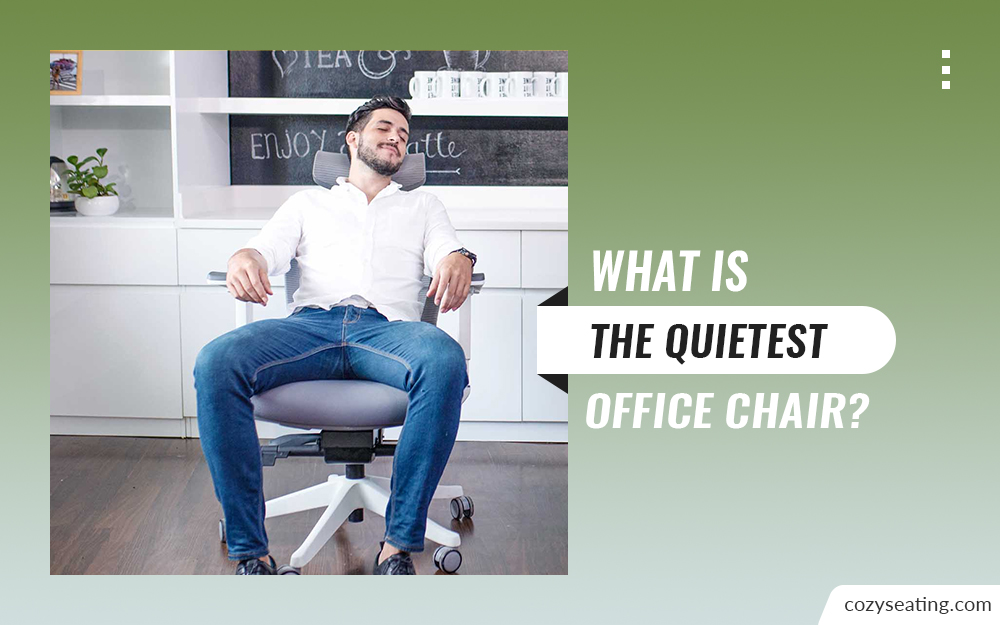
From a study, office noise has adverse effects on 69% of employees worldwide. How? According to the study, it causes distractions among staff as well as stress. Consequently, the production rate goes down – thus, the need for using a quiet chair. So, what is the quietest office chair?
The quietest chair is one with minimal moving parts. Some of the parts that could cause your office chair to make noise include;
- Loose joints
- Wheels
- Bolts and screws
- Gas lift mechanism
You can make your office chair quieter by;
- Applying oil to the mechanism
- Replacing the wheels
- Tightening loose parts
- Fixing or replacing the springs
- Oiling noisy parts
Read till the end because I’ll comprehensively guide you on how to make your chair quiet if it’s squeaky and how to pick the quietest one out of the lot.
Table of Contents
What Is The Quietest Office Chair?

Office chairs with minimal moving parts are less noisy, for example, the Humanscale Diffrient World Office Task Desk Chair. With no mechanism, this chair fits perfectly in the least of the quietest chair.
Apart from the above, below are some of the chairs you could consider as quiet for office use. The list is made of office chairs that feature no or less minimal moving parts —thereby, less noisy.
Do you possess any of these or any other office chair that you thought was the quietest but is still noisy? Well, there are many reasons that could cause this problem. Keep reading to know them and (later in the article) get a permanent solution to each of them.
Why Does My Office Chair Make Noise?
To know how to fix a noisy chair, you need to know the root of the problem. So, ask your spouse, friend, or working mate to sit on your chair as you try to identify the exact source of the noise.
Sadly, there are a ton of reasons that could make your office chair noisy. Below, I comprehensively discuss each of them;
1. Wheels
Worn-out wheels make a chair noisy whenever you move the chair. If you’ve been using your chair for a year plus, it’s likely you need to replace the old wheels. You see, once a chair gets old, the washers responsible for securing the ball bearings wear out.
Consequently, your chair produces an irritating, popping sound.
Dryness is another culprit in making your office chair noisy. If it’s been long since you oiled the wheel bearings, then anytime you try to move your office chair, the bearings will make some noise.
2. Casters
There are many instances when the office chair casters make a deafening sound. This particularly happens when the tread has a problem. Some of the tread problems include;
- Cracking
- Wearing out
- Delaminated tread
- Tread chipping and/or missing chunks
- Screeching Metal-on-Metal sound
In about a minute, let me discuss these issues.
- Cracking
Heat and too much pressure on the office chair wheels could cause the tread wheels to crack. One of the wheel materials prone to cracking due to excessive sun heat is rubber.
Polyurethane wheels, on the other hand, crack due to high pressure from your body weight while moving the chair.
- Treads Wearing Out
What type of floor do you have in your office, hard flooring? Well, the tread could be worn-out. Rubber wheels aren’t suitable for hard flooring. If used on such hard surfaces, their lifespan reduces hugely.
You can tell treads are worn out if your chair isn’t rolling evenly. Also, if when you want to move your chair, it moves against the intended direction, the treads are worn-out.
- Delaminated Tread
Delamination occurs when the tread separates from the office chair wheel. Exposure of the chair wheels to solvents or liquids weakens the adhesive used to laminate the tread material – thereby delaminating the tread.
High temparures also causes delamination. And, of course, poor application of the adhesive during lamination.
- Tread Chipping
Using your office chair in flooring that the manufacturer didn’t recommend would eventually cost you a lot, especially when trying to buy replacement casters.
Bad flooring makes the tread chip off. When they chip, moving the chair becomes difficult and noisy.
- Screeching Metal-on-Metal sound
Do you hear a metal-on-metal shriek sound when moving the chair? The bearings could be worn-out, or they may be too dry and need lubricating oil! One major sign that the bearings need oiling is if you’re using excessive effort to move the office chair around.
Another red flag is if you want to turn in the opposite direction of your chair, your office chair doesn’t move. If it does, it costs you too much effort to do so.
3. Bolts And Screws
Loose bolts and screws can make your office chair noisy. Often, bolts get loose over time. This happens due to constant pressure when you sit on the chair. However, if you assembled your chair and the noise source is the bolts, you definitely didn’t tighten them well enough – thus, the noise.
4. Gas Lift Mechanism
Is there a creaky noise coming from the gas lift mechanism? It’s a clear indication that the gasket is faulty.
So, check between the piston shaft and the pneumatic cylinder to check the condition of the gasket.
How Do You Stop A Chair From Making Noise?
By working on the issues that I have pointed out above, you stop your office chair from making noise. So, how do you go about that? Read below.
Grease the Gas Lift Mechanism
The gas lift mechanism is one of the most delicate parts of your office chair. Therefore, if the piston is the source of the noise, you might have to involve an expert to work on it. If you believe in yourself and the knowledge, you’ve acquired from repairing your past office chairs, then proceed by opening the piston.
Using a lubricating oil, clean the lift mechanism. For great results, I would suggest that you use WD-40.
Finalize the process by applying white lithium grease to the mechanism before assembling the chair again.
Apply Lubricating Oil And Tighten The Screws, Nuts, And Bolts
The bolts, screws, and nuts get dry over time if you’re using an old office chair. Lack of frequent oiling would make your office chair noisy. So, to quiet office chair, apply oil to each of these parts.
How?
Step #1: Turn the chair over: These parts are underneath the seat. So, you need to turn over your office chair to reach them.
Step #2: Apply Oil: You can choose to remove all nuts and replace them again. If they’re too hard to remove or tighten, apply some lubricating oil. This makes the process easy. Besides, the oil also prevents the nuts, screws, and bolts from lusting. Consequently, when you need to unassemble the chair, it won’t be hard to loosen the nuts.
It would, however, be vital to replace any rusted nuts and screws with new ones.
Step #3: Tighten any loose nuts, screws, and bolts: Please use a wrench (or screwdriver) to tighten any nuts, bolts, or screws that could be loose. However, you may not be sure if any other screw, nut, or bolt is about to get loose, so tightening all of them is a great measure of preventing office chair noise in the near future.
Wheels and Casters
Dry bearings in wheels need to be lubricated to stop the noisy sound you hear upon moving your office chair.
Here’s how to do it;
- Turn over the office chair.
- Wipeout all the dust on the wheels and casters
- Apply the recommended lubricating oil
- Turn over the chair again and move it gently to spread the oil in all the bearings.
There should be no more noise. However, if you still can hear it, the wheels and casters may be worn out. Hence, you need to replace them to eliminate the squeaky sound.
Please do note that if the treads are worn out, you need to buy suitable wheels based on your office flooring material.
If, however, the treads are chipping out, consider buying steel wheels as they last longer and are suitable for any office floorings. For delaminated treads, a sure solution is to get your chair new casters.
Backrest
If your chairs make an unusual sound when you lean back, you might have to check the springs. If there’s too much pressure on the springs, they make a sound, which you could solve by applying lubricating oil.
To be specific, these springs are suited between the spring-end and housing knob.
How to go about it?
- Turn your office chair upside down.
- Start by loosening the tension turn-knob. Proceed by removing the turn-knob.
- Next, apply the lubricating oil to the turn-knob housing.
- Wipe away excess oil and place the chair upright to test it.
Loose Joints
If there are any moving parts in your office chair, for example, the armrests and headrest, their joints are likely loose.
There are two ways to go about fixing loose joints;
- Tightening the loose screws and bolts
- Applying lubricating oil
Begin by tightening any loose nuts and bolts in any chair joints. Often, too much or frequent movement in these sections causes the nuts and screws to loosen. As a result, you’re likely to hear some squeaky sound.
If tightening any loose nuts and screws doesn’t stop the irritating sound, grab your lubricating oil and apply it to the chair joints.
Spraying is preferable over pouring as it minimizes the amount of oil pouring down and messing with your floor.
Even so, placing an old blanket under the chair before applying oil would be enough precaution.
Wondering which is the best lubricating oil to apply? No trouble, I’ll help.
Lubricating Oils to Use
While there are many lubricants to consider in the market, I still suggest using WD-40. If, however, for any reason, you don’t want to use it, consider any of the options below;
- Ordinary oil: Ordinary oil works well in lubricating screws.
- Free All Rust Eater Deep Penetrating Oil: This oil also prevents rust on nuts and screws.
- Kano Kroil Penetrating Oil: If you don’t want to replace the rusted nuts and screws, apply Kano Kroil — it cleans all rust.
- 3-IN-ONE – 120018: Besides working fast, this oil prevents rust and makes it easy to loosen tight nuts and screws.
Other Non-Technical Ways to Quiet Office Chair
If you only hear a squeaky sound when you move your office chair around, but lubricating and changing wheels/casters doesn’t solve the issue, consider buying a floor mat, repairing your office floor, or simply cleaning the floor.
Let me explain further.
Use a Rug: Did you try all of the above solutions to make your office chair quiet with no success? Probably it’s time to check around the office for possible culprits.
One of the major areas that could make an office chair noisy is a rough floor. Hardwood floors are especially a culprit in this.
Placing a mat under your office chair could solve that problem once and for all.
Some of the mats that come highly recommended include;
- Tempered glass chair mat
- Rubber office chair mats
- Polycarbonate chair mats
Repair the floor: Repairing the floor is only applicable if there are noticeable cracks. Cracks on your hardwood floor make it difficult to move the chair – thereby producing a noisy sound when you move.
Consider using a mat if you don’t have money to repair or replace the floor.
Keep Your Office Floor Clean: Don’t be surprised; a dirty floor could make your office chair noisy. Here’s how. When food particles fall on the floor, your chair wheels collect them as it moves, resultantly getting stuck between the wheel bearings.
Consequently, whenever you move your office chair, the bearings lack enough room to rotate, making a highly irritating sound.
Therefore, if you’re a snacking victim, clean your working area often.
FAQs
How Do You Stop A Chair From Squeaking Without Wd-40?
There are several measures that you can consider taking to stop a chair from squeaking without WD-40. However, I would tell you for free that WD-40 outweighs each of them regardless of their cost-effectiveness.
Even so, the options below would still work great in lubricating a noisy office chair.
They include;
- Beeswax Wooden Polish and Conditioner
- Aerosol oil spray
- PTFE lubricant
My Verdict
Though you can get a quiet office chair, over time, it can start being noisy over time. This mostly happens when you buy a chair with many moving parts. It’s a common drawback of most ergonomic chairs.
There’s nothing to worry about, though, as all noise-causing issues have easy fixes. You can either tighten any loose parts, lubricate the moving parts, or replace the worn-out parts.
If nothing works, check if your floor is the cause of the office chair noise. You might want to clean it or repair it.
The last resort should be buying a new traditional office chair, especially if the current one is old. This is only suitable if non of the above ways work.
Recommended Reading

How to Remove Caster Wheels from Office Chair
This article will guide you on how to remove caster wheels from office chair using some easy steps and allow you to do it yourself.
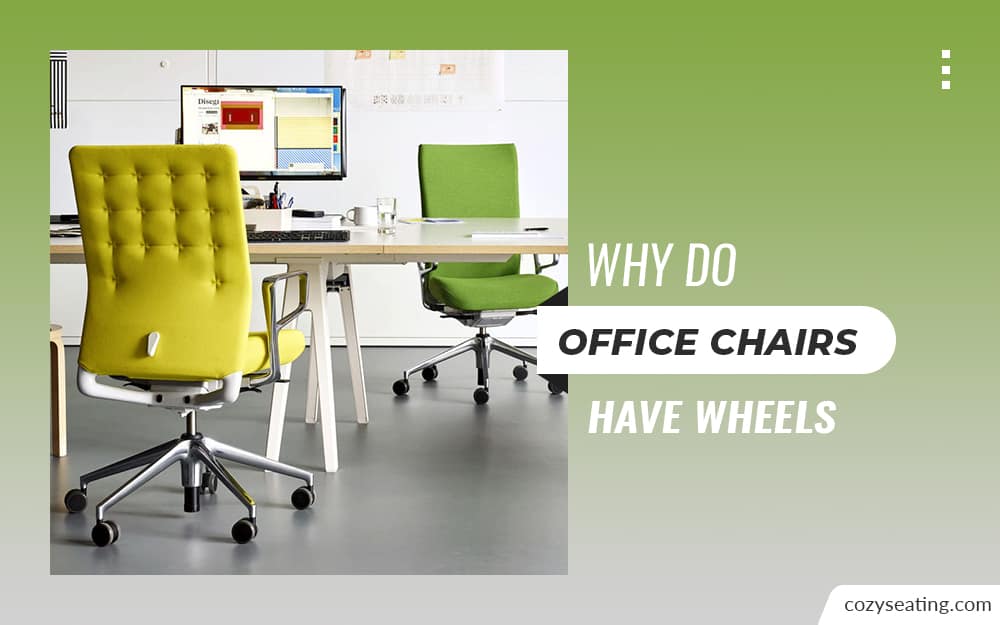
Why Do Office Chairs have Wheels?
Not sure why office chairs have wheels? Wheels ease movement around your office. Besides, their five wheels keep you stable while you seat. Click to know more.
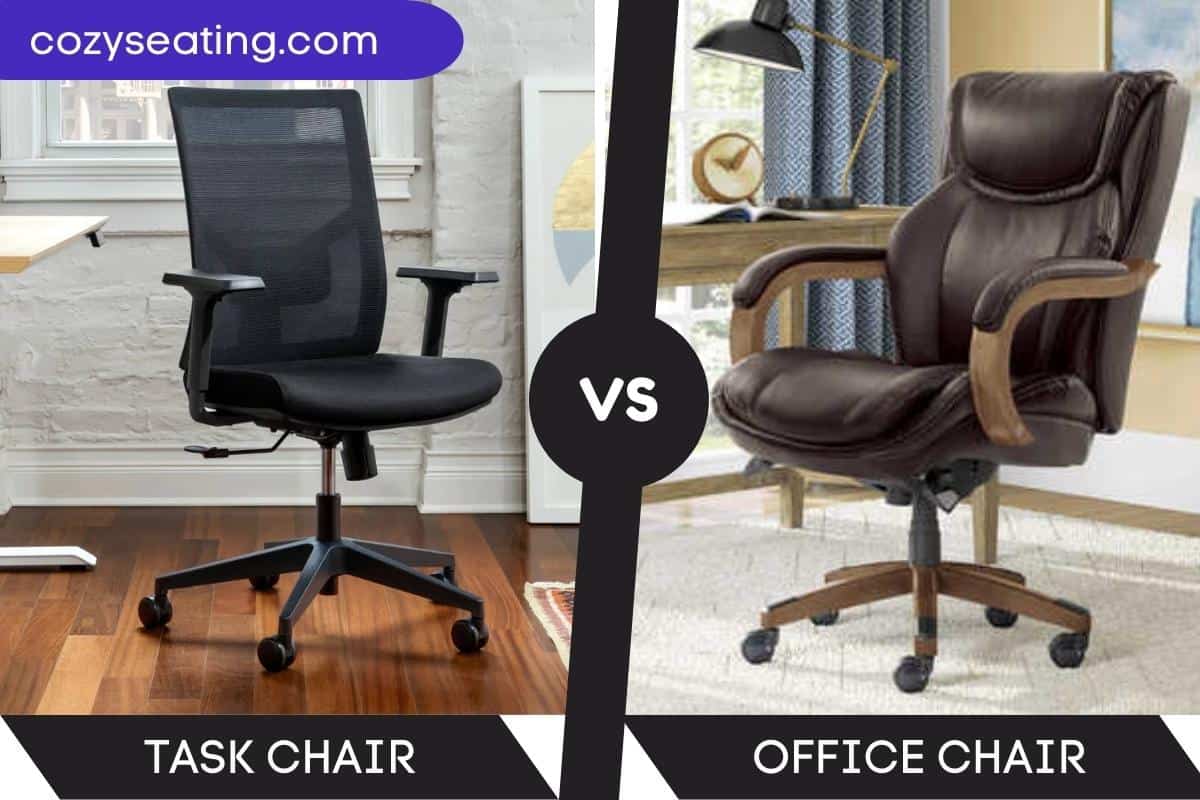
Task Chair Vs. Office Chair
Here’s a definitive guide on task chair vs. office chair. Explore to understand the two pieces of furniture and grab the ideal one for a good posture. Welcome!
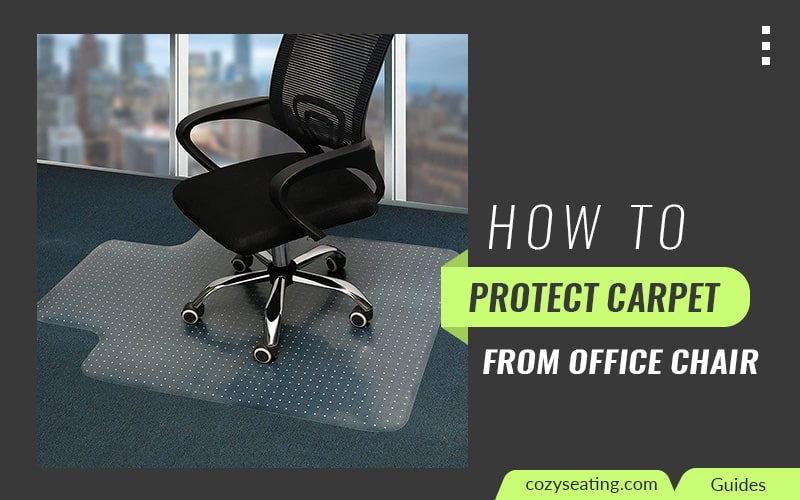
How to Protect Carpet from Office Chair (Easy Fixes)
You can learn How To Protect Carpet From Office Chair by reading on. It also discusses how to prevent office chairs from ruining carpets.
